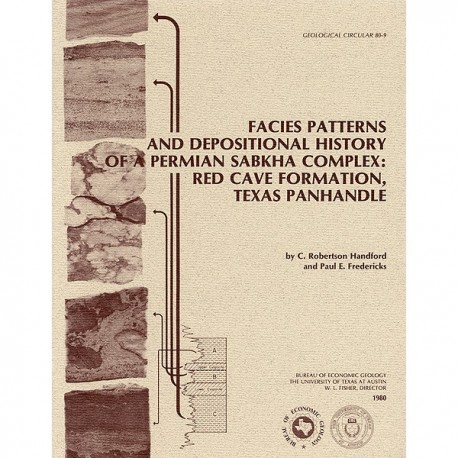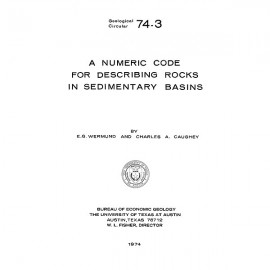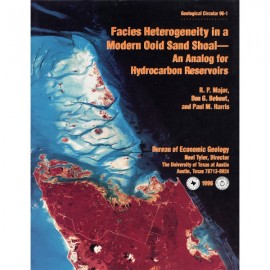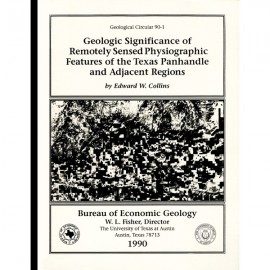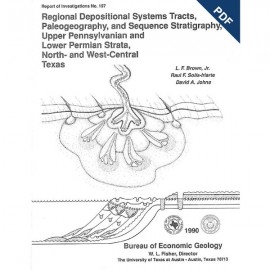Geological Circulars
-
Books & Reports
- Reports of Investigations
- Guidebooks
- Udden Series
- Geological Circulars
- Down To Earth
- Atlases of Major Oil and Gas Reservoirs
- Texas Memorial Museum Publications
- Environmental Geologic Atlas of the Texas Coastal Zone
- Mineral Resource Circulars
- Other Reports
- Seminars and Workshops
- Handbooks
- Submerged Lands of Texas
- Symposia
- Annual Reports
- Open File Reports
-
Maps & Cross Sections
- Thematic Maps
- Miscellaneous Maps, Charts & Sections
- Geologic Atlas of Texas
- STATEMAP Project Maps
- Geologic Quadrangle Maps
- Cross Sections
- Highway Geology Map
- Energy and Mineral Resource Maps
- Shoreline Change and Other Posters
- Wilcox Group, East Texas, Geological / Hydrological Folios
- Bouguer Gravity Atlas of Texas
- River Basin Regional Studies
- Featured Maps
- Posters
- Teachers & the Public
-
Geological Society Publications
- Gulf Coast Association of Geological Societies
- Alabama Geological Society
- Austin Geological Society
- Corpus Christi Geological Society
- Houston Geological Society
- Lafayette Geological Society
- Mississippi Geological Society
- New Orleans Geological Society
- South Texas Geological Society
- GCS SEPM Publications
- Historic BEG & UT Series
Facies Patterns and Depositional History of a Permian Sabkha Complex: Red Cave Formation, Texas Panhandle
GC8009
A free, digital version of this publication can be found on: Texas ScholarWorks
GC8009. Facies Patterns and Depositional History of a Permian Sabkha Complex: Red Cave Formation, Texas Panhandle, by C. R. Handford and P. E. Fredericks. 38 p., 19 figs., 2 appendices, 1980. ISSN: 0082-3309: Print.
To purchase this publication as a PDF download, please order GC8009D.
ABSTRACT
The Red Cave Formation (Permian, Leonard Series) in the Texas Panhandle consists of cyclic, red-bed clastic and carbonate-evaporite members that reflect deposition in extensive coastal sabkhas. These environments were bounded on the north by a desert wadi plain and on the south by a carbonate inner shelf that bordered the northern Midland Basin. Evaporite members were deposited in carbonate evaporite coastal sabkhas, and clastic members were deposited in mud-rich coastal to continental sabkhas that passed inland to wadi-plain environments. Inner shelf dolomites include slightly fossiliferous, faintly laminated to burrowed mudstone and pellet wackestone. These lithofacies are overlain by and interfinger northward with dolomite and anhydrite deposited in coastal sabkhas. Oolitic or pellet packstone and grainstone with well-developed cross-lamination suggest shallow subtidal to intertidal deposition. Supratidal facies include dolomitic mudstone with algal laminations and some intraclasts. Sabkha sequences are commonly capped with nodular anhydrite; mud-rich sabkha sequences culminate with red to green mudstone and anhydrite. Carbonate and evaporite facies pinch out generally toward the northwest and northeast into wadi-plain red beds. These facies include ripple-drift, cross-laminated siltstone and sandstone, adhesion-rippled siltstone, and red to green mudstone. Desiccation features, intraclasts, root zones, and paleosol horizons cap braided fluvial deposits and attest to subaerial exposure and probable non-marine conditions. Partial modern analogs to Red Cave sabkha depositional elements include coastal mud flats and alluvial fans in the northwestern Gulf of California, tidal flats and the Wooramel ephemeral stream delta in Gladstone Embayment, Shark Bay, Australia, and Trucial Coast sabkhas in the Persian Gulf. Each setting has certain facets that are remarkably similar to interpreted paleoenvironments and lithofacies of the Red Cave Formation.
Keywords: depositional history, facies, Leonardian, Panhandle, Red Cave Formation, sabkhas, Texas, Texas Panhandle
Citation
Handford, C. R., and Fredericks, P. E., 1980, Facies Patterns and Depositional History of a Permian Sabkha Complex: Red Cave Formation, Texas Panhandle: The University of Texas at Austin, Bureau of Economic Geology, Geological Circular 80-9, 38 p.
